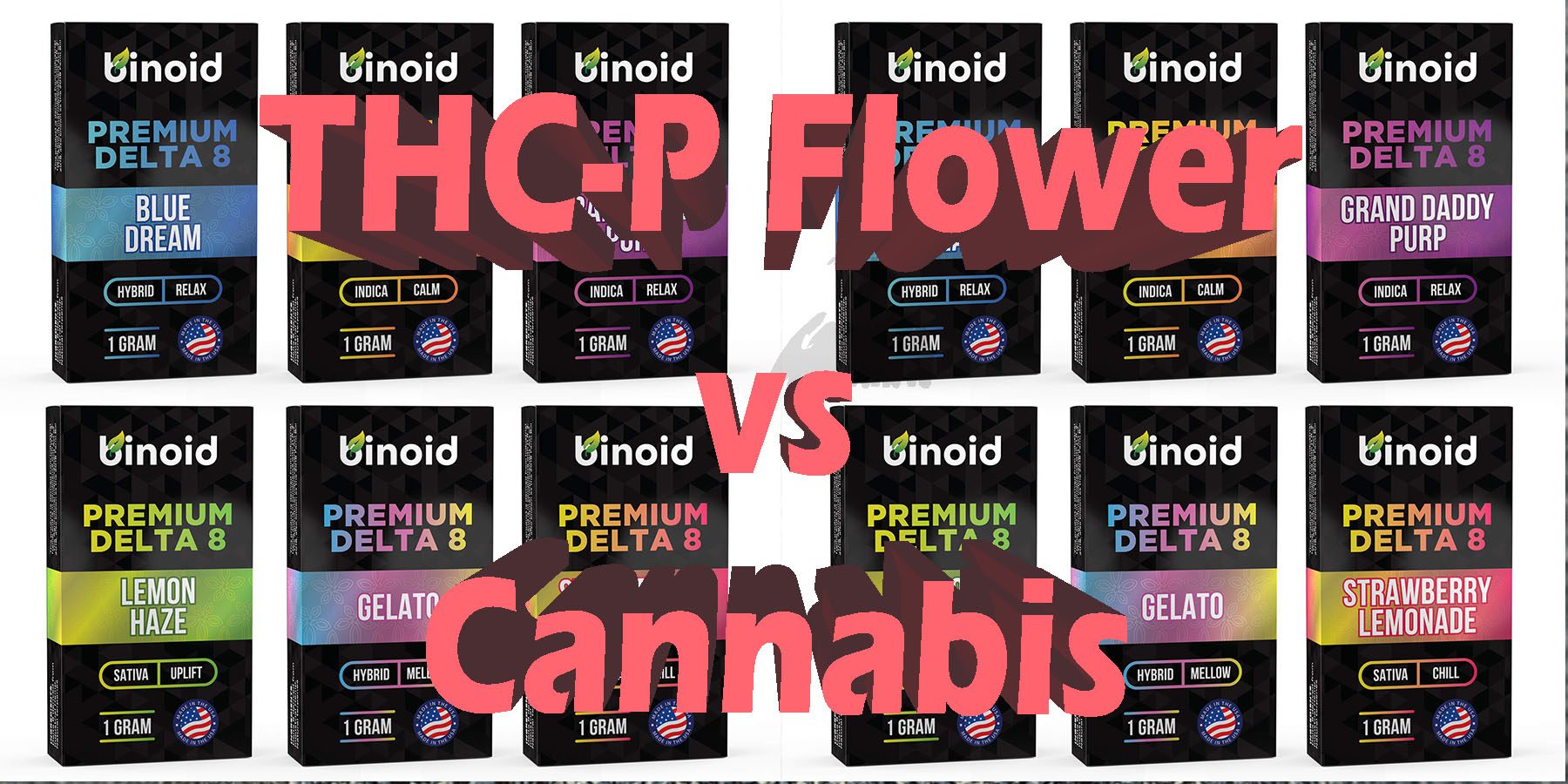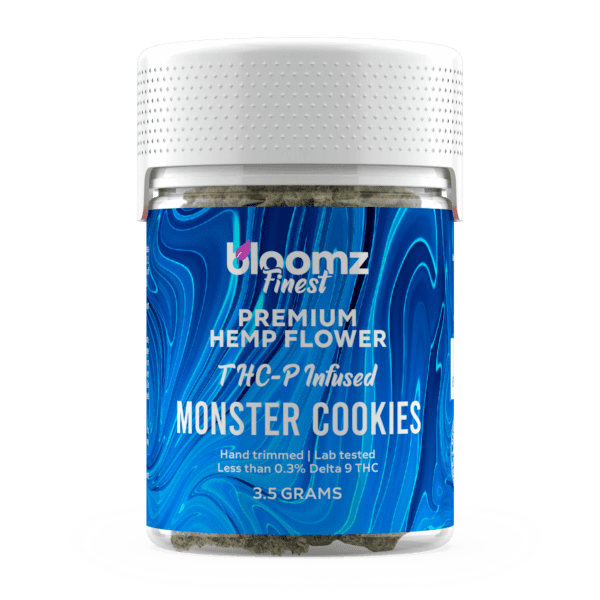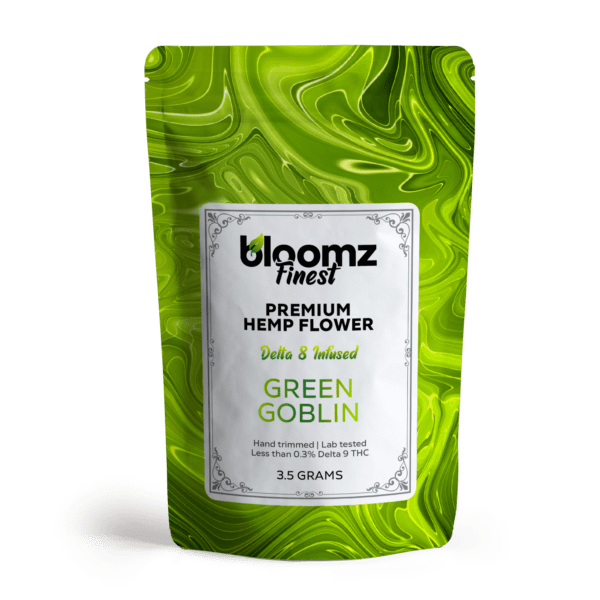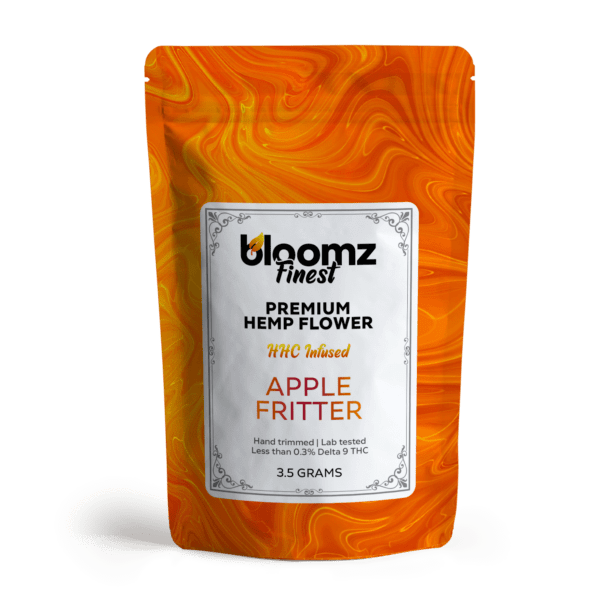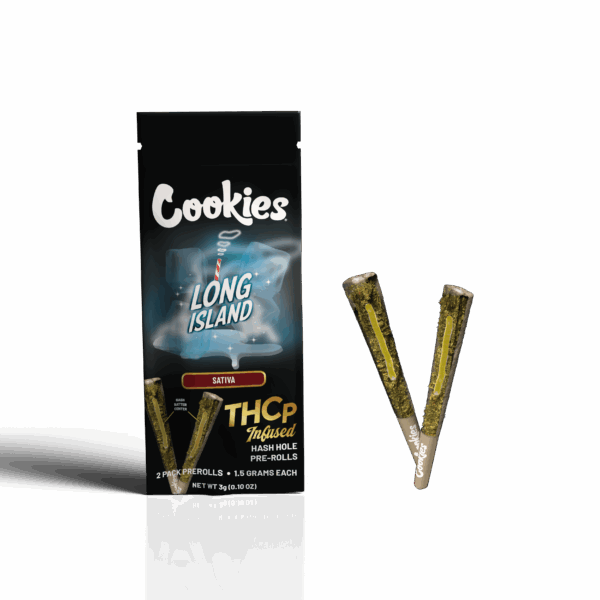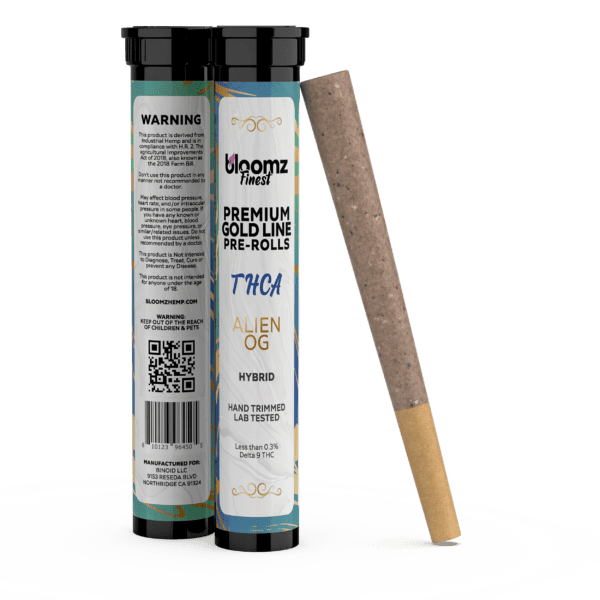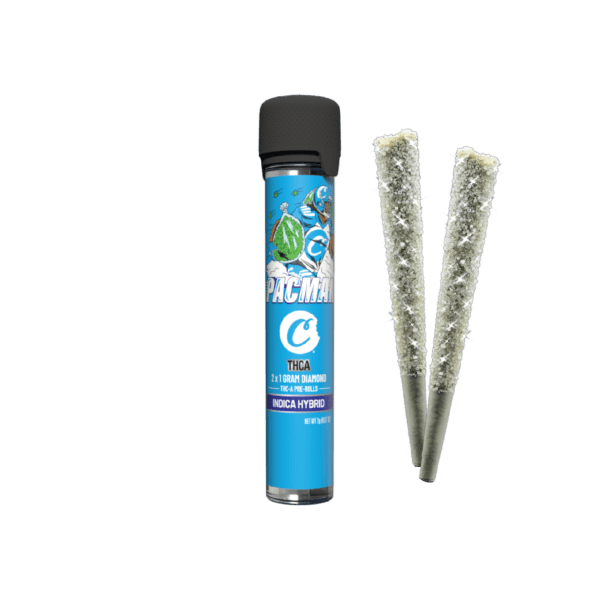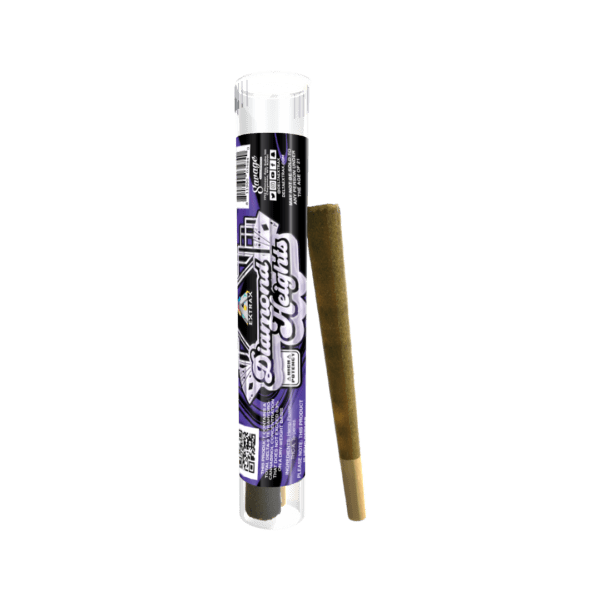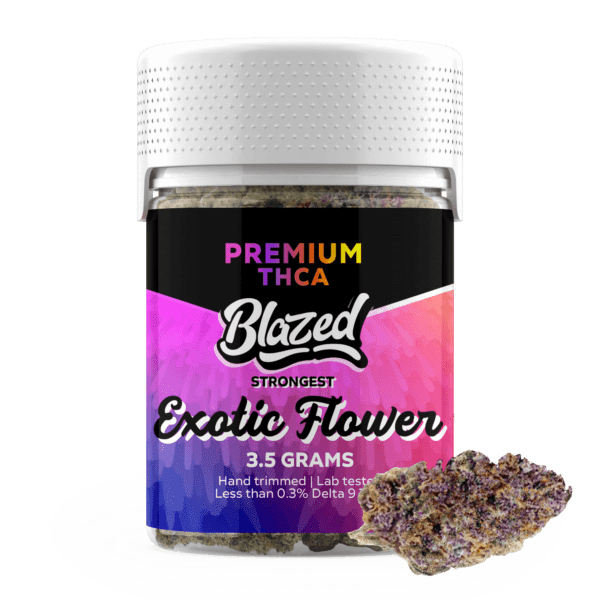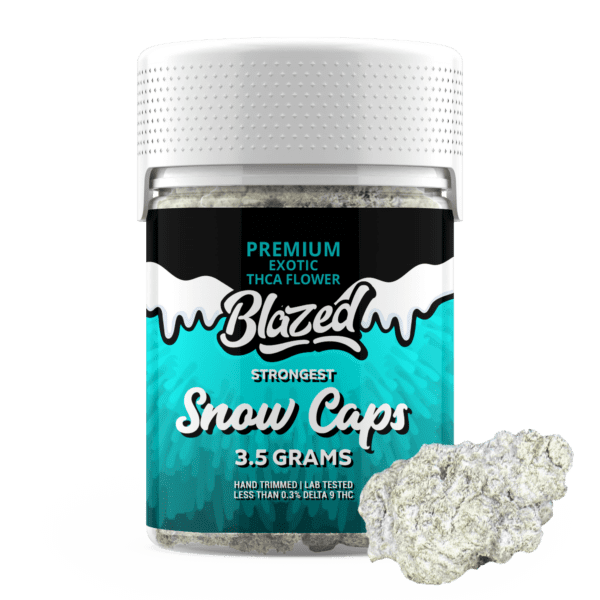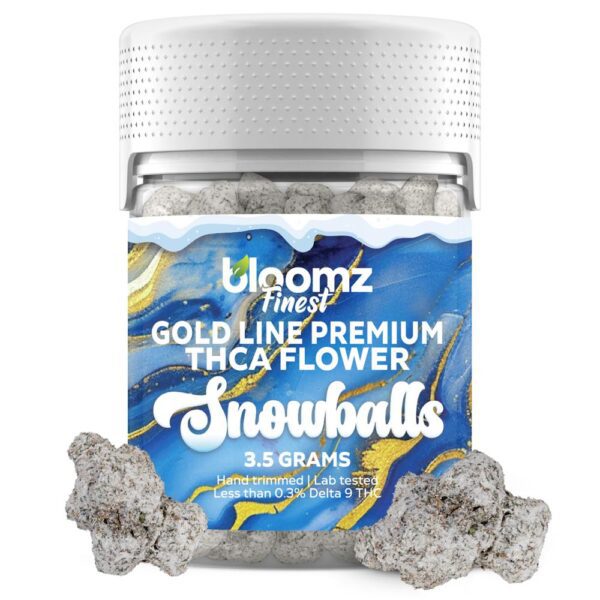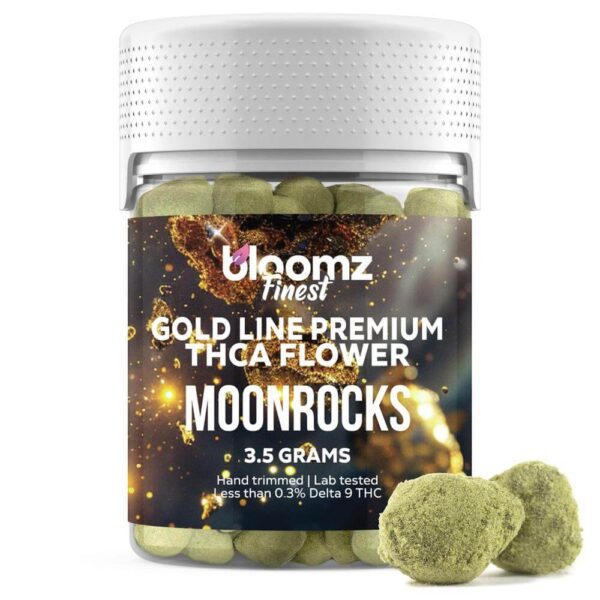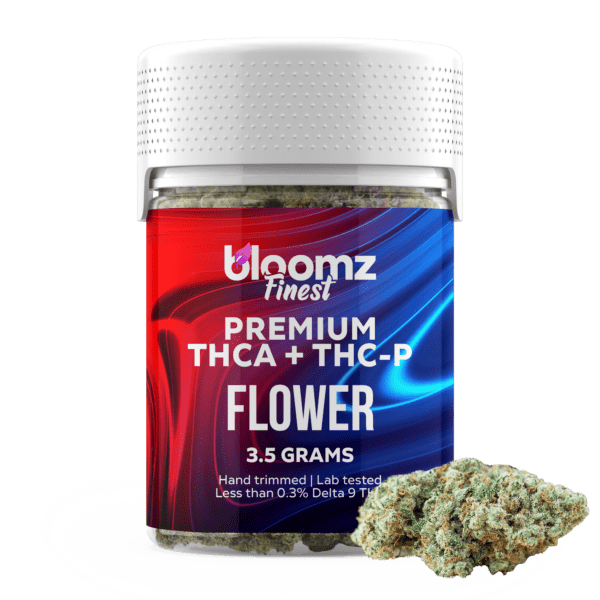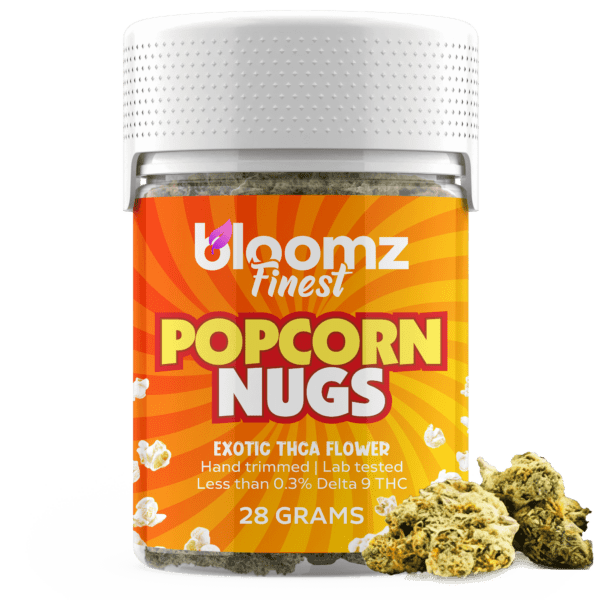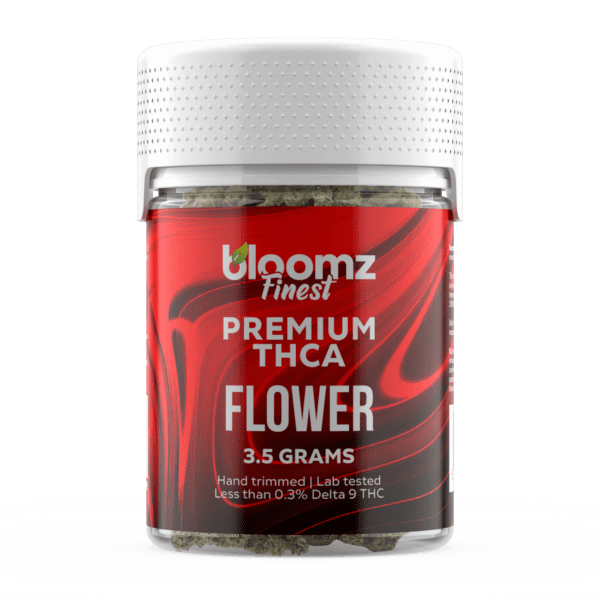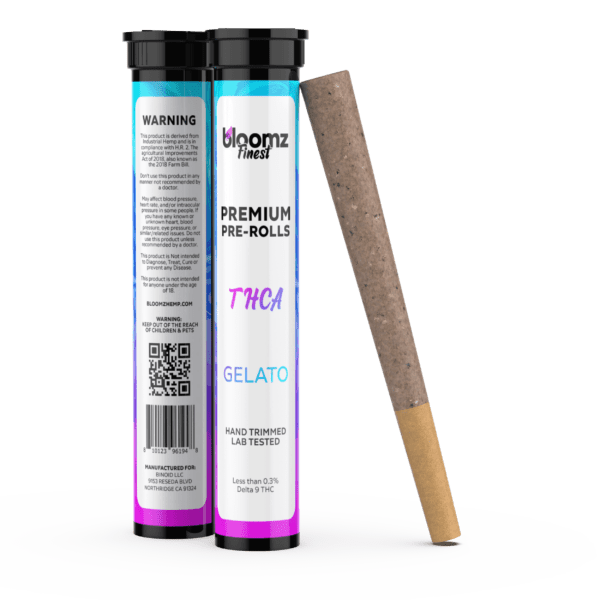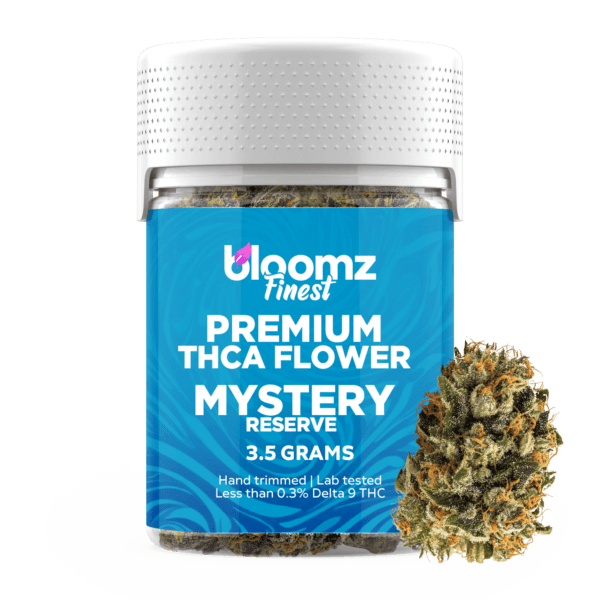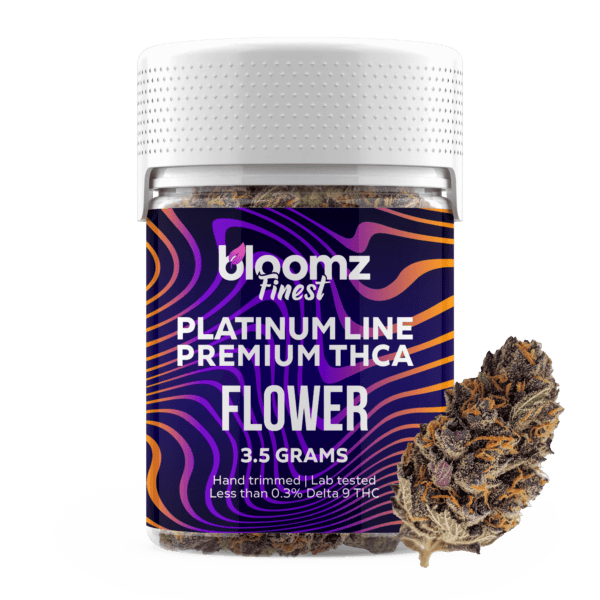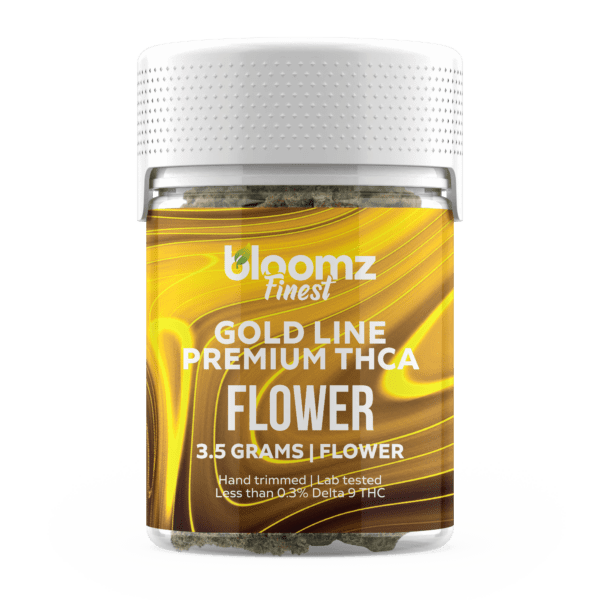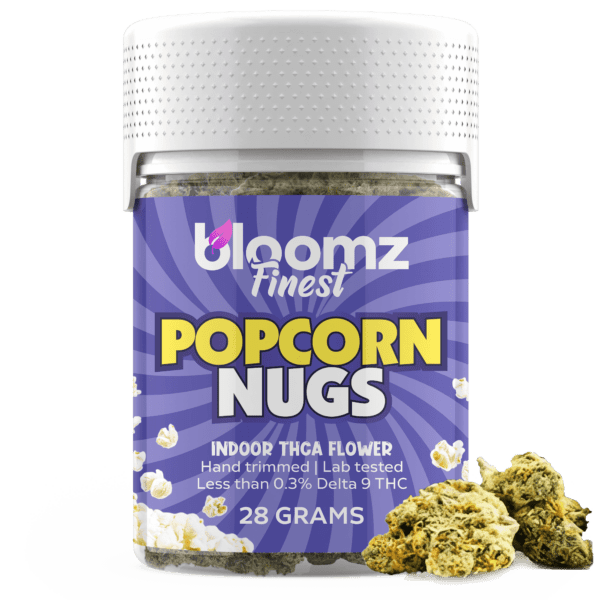In the grand and ever-expanding universe of botanical compounds, where scientific exploration is constantly charting new territories, a celestial object of immense gravitational pull has recently appeared on the star charts. This powerful newcomer is THC-P, a cannabinoid whose discovery has reshaped our understanding of potency and has given rise to a new generation of products, most notably THC-P flower. The sheer force of its presence has inevitably created a fascinating gravitational contest, pitting it directly against the central star of our solar system, the life-giving, culturally foundational plant known simply as cannabis.
This comparison is not merely about two points of light in the same sky; it is a profound exploration of natural harmony versus concentrated power, a deep dive into the vast differences between a holistic, time-tested plant and a single, supercharged molecule that promises a journey into the deepest reaches of euphoria.
TO BUY THC-P FLOWER CLICK HERE
Recommended products
Why It’s Important to Breakdown the Matchup of THC-P Flower vs. Cannabis
To navigate the exhilarating but often treacherous currents of the modern cannabinoid market, it is of paramount importance to conduct a thorough and sober analysis of the matchup between THC-P flower and traditional cannabis. These two products, while superficially similar in their ultimate purpose, represent wildly divergent concepts in terms of their origin, potency, regulation, and the very nature of the experience they provide. The legislative door opened by the 2018 Farm Bill has ushered in an era of powerful, novel, hemp-derived cannabinoids like THC-P, but with great novelty comes the need for even greater consumer education.
Without a clear and comprehensive understanding of the monumental differences between these two contenders, individuals risk embarking on an experience for which they are profoundly unprepared, potentially leading to discomfort and a misunderstanding of the products themselves:
To Quantify the Immense Chasm in Potency: The most urgent and critical reason to break down this comparison is to properly contextualize the almost unbelievable difference in molecular potency between the THC-P molecule and the traditional Delta 9 THC found in cannabis. Groundbreaking research has revealed that THC-P’s unique molecular structure allows it to bind to the body’s CB1 receptors with an affinity that is potentially an order of magnitude greater than that of Delta 9 THC. A detailed breakdown is therefore crucial for public safety, serving to educate consumers that THC-P is not just “stronger” weed, but an entirely different class of substance in terms of its power. This knowledge is essential for fostering an environment of extreme caution, where THC-P is understood to be a product exclusively for the most experienced and high-tolerance users.
To Differentiate Between an Agricultural Product and a Synthetic Application: This matchup serves to highlight a fundamental and often misunderstood difference in how these products are brought to market. Traditional cannabis flower is a direct agricultural good, a plant that is cultivated over many months to naturally produce its rich and complex chemical profile. In stark contrast, THC-P flower is a manufactured item. It is created by taking an otherwise non-intoxicating hemp flower and artificially applying a THC-P concentrate that has been chemically synthesized in a laboratory. Understanding this critical distinction—a holistic, naturally grown plant versus a scientifically engineered, multi-component infused product—is vital for any meaningful evaluation of the product’s character, potential consistency, and the absolute necessity of verifying its purity.
To Illuminate the Deeply Contrasting Legal Realities: The legal frameworks that govern these two products exist in separate, and often contradictory, universes. Traditional cannabis remains a Schedule I controlled substance at the federal level, with its legality being determined by a complex and ever-shifting patchwork of individual state laws. THC-P, on the other hand, exists in a highly volatile and dangerous legal gray area. Its proponents argue that it is a legal hemp derivative under the federal Farm Bill, but its extreme psychoactive potency and synthetic origins have placed it firmly in the crosshairs of state regulators, many of whom have already moved to ban it alongside other intoxicating hemp-derived cannabinoids. A clear analysis of these divergent legal paths is essential for consumers to understand the significant legal risks associated with purchasing and possessing THC-P in many jurisdictions.
To Champion a Culture of Safety, Research, and Harm Reduction: Given the extreme potency of THC-P and the comparatively lax regulatory oversight of the national hemp market, consumer education becomes the single most important tool for ensuring public safety. A detailed comparison that emphasizes the absolute necessity of scrutinizing comprehensive, full-panel, third-party lab reports (COAs) is vital. By explaining the potential risks of residual solvents, unknown chemical byproducts, or inaccurate potency labeling that can arise from a complex chemical synthesis process, this breakdown encourages a culture of extreme caution, responsible sourcing, and effective harm reduction when dealing with such a uniquely powerful substance.
Contender #1: THC-P Flower
Making a seismic entrance from the very frontiers of cannabinoid science and discovery, THC-P flower has rapidly and deservedly earned a reputation as one of the most powerful and intense products available in the entire hemp-derived marketplace. To the untrained eye, it appears deceptively familiar, typically presenting as visually stunning, terpene-rich hemp buds that could easily pass for top-shelf traditional cannabis. However, the true story and the immense, almost overwhelming power of this product are not a result of natural cultivation but of expert scientific application; its defining character is derived from the incredibly potent, synthesized cannabinoid concentrate with which the foundational flower is meticulously infused.
THC-P flower is not a botanical specimen that can be found in any of nature’s hidden groves; it is a carefully engineered, multi-component product that represents a perfect and potent fusion of premium hemp agriculture and the most advanced applications of laboratory chemistry. It stands as a powerful testament to the relentless and accelerating pace of discovery within the cannabis industry, a product that dramatically pushes the known boundaries of potency and offers an experience of unparalleled and profound intensity.
To truly understand the flower, one must first grapple with the extraordinary molecule that gives it its name: Tetrahydrocannabiphorol (THC-P) – a naturally occurring phytocannabinoid that was only recently discovered by a team of Italian researchers in 2019, and is a homolog of the famous Delta 9 THC, meaning it shares a very similar core molecular structure, but with one critical and game-changing difference: the length of its alkyl side chain. While Delta 9 THC has a five-carbon atom side chain, THC-P possesses a significantly longer seven-carbon atom side chain. This structural elongation has a profound impact on how the molecule interacts with the primary psychoactive target in the human body, the CB1 receptor. The longer chain allows THC-P to bind to this receptor with an incredibly high affinity—the initial research suggested it could be up to 33 times more active at the CB1 receptor than Delta 9 THC.
While THC-P does exist naturally in the cannabis plant, it is found in such vanishingly small concentrations that it is impossible to extract in commercially viable amounts. Therefore, virtually all THC-P on the market today is synthesized in a lab, typically using hemp-derived CBD as a starting material, through a complex, multi-step chemical process.
With this scientific understanding, it becomes crystal clear that “THC-P flower” is not a strain of cannabis that a farmer can cultivate to be naturally rich in this ultra-potent cannabinoid but instead, it must be understood as a composite, manufactured, and highly potent infused product. The process begins with a base of legally compliant, high-quality hemp flower, typically a strain that has been specifically cultivated to be rich in CBD and terpenes, while by law containing less than 0.3% Delta 9 THC. This beautiful and aromatic, but non-intoxicating, hemp flower then serves as the physical vehicle or chassis for the final product. It provides the structure for smoking or vaping, the delicious terpenes that create the aroma and flavor, and a background of other minor cannabinoids.
This inert hemp flower is then taken and meticulously infused or coated with a pure, concentrated THC-P distillate—the incredibly powerful, viscous oil that was scientifically synthesized in a laboratory. It is this crucial infusion step that transforms the simple hemp flower into a product of extreme potency, capable of delivering the uniquely intense and long-lasting effects of THC-P in a traditional, inhalable format. The final quality and safety of the product are therefore entirely dependent on two independent factors: the premium quality of the agricultural base flower and the verified purity and potency of the scientifically derived THC-P distillate.
Recommended products
The creation of a high-quality, safe, and effective THC-P flower is a sophisticated and highly technical process that demands a perfect marriage of expert agricultural practices and the highest standards of laboratory chemistry. Each stage in this complex chain of production is absolutely critical to ensuring the final product that reaches the consumer is not only incredibly potent but also clean, consistent, and free from any harmful impurities:
Sourcing and Curing of Premium, Terpene-Rich Hemp Flower: The entire enterprise is built upon the foundational quality of the base flower. The most reputable and quality-focused producers begin with top-shelf, premium-grade CBD or CBG hemp flower, which is almost exclusively cultivated indoors or in light-assisted greenhouses using organic and sustainable farming methods. This flower is selected for its superior physical characteristics: a dense, tight, and aesthetically pleasing bud structure, vibrant and attractive colors, a very high concentration and complex profile of natural terpenes to ensure a rich and enjoyable aroma and flavor, and a smooth, clean-burning quality that is essential for a pleasant and palatable user experience. The flower must be perfectly dried and cured before it can be infused.
Laboratory Synthesis and Rigorous Purification of THC-P Distillate: In a completely separate, highly controlled, and sophisticated laboratory environment, the THC-P itself is meticulously created. The process typically begins with a highly purified CBD isolate that has been extracted from legally grown and tested hemp. This pure CBD then serves as the starting material for a complex, multi-step chemical synthesis. This is a far more complex and technically demanding process than the simple ismerization used for Delta 8, often involving several distinct chemical reactions to first build a precursor with the necessary seven-carbon side chain, and then to cyclize it into the final THC-P molecular structure. The resulting crude THC-P oil must then undergo a rigorous, multi-stage purification process, often involving advanced techniques like chromatography and multiple rounds of distillation, to isolate the THC-P and meticulously remove all residual solvents, catalysts, and any unwanted chemical byproducts, resulting in a pure, potent, and transparent THC-P distillate.
The Precision Art of the Infusion Process: This is the crucial manufacturing step where the inert hemp flower and the ultra-potent THC-P distillate are skillfully combined into a single, homogenous, and consistent product. Given the extreme and almost unforgiving potency of THC-P, this step requires incredible precision and care to ensure an even and consistent coating. A common and effective technique involves significantly diluting the pure THC-P distillate with a carrier, such as natural terpenes or other cannabinoid distillates, to create a less viscous and more manageable solution. This solution can then be sprayed in a very fine, atomized mist over the hemp buds as they are gently tumbled in a specialized coating machine. This process is designed to ensure that the THC-P is evenly and lightly distributed and that there are no dangerous “hot spots” of extreme concentration on the flower.
Essential Post-Infusion Curing and Meticulous Quality Assurance: After the flower has been successfully infused with the THC-P distillate, it becomes a slightly moist and sticky product that requires a final and essential curing stage. This allows the distillate to be fully and evenly absorbed into the porous plant material and for any excess moisture or carrier liquids to properly and completely evaporate. This step is absolutely critical for ensuring a smooth, even burn and for preventing any potential for microbial growth in the final packaged product. During this stage, dedicated quality control teams will visually inspect the product for consistency and take multiple samples from across the batch for in-house testing to confirm that the potency is on target and, most importantly, is evenly distributed throughout the flower.
Final, Full-Panel, Third-Party Laboratory Verification for Safety: As the final and most important step for ensuring consumer safety and building trust, representative samples from every single finished batch of THC-P flower must be sent to an independent, ISO-certified, third-party laboratory. This lab performs a full-panel analysis that is then published in a public-facing Certificate of Analysis (COA). The COA provides a detailed breakdown of the cannabinoid potencies, verifying the THC-P content and confirming the legal compliance of the Delta 9 THC level. Most importantly, it must also screen for a comprehensive list of potential contaminants, including residual solvents, pesticides, heavy metals, mycotoxins, and other impurities, giving the consumer a final, unbiased, and transparent seal of approval on the product’s purity and safety.
The burgeoning market for THC-P flower, while still in its early stages compared to more established cannabinoids, offers a focused selection of product types and formats. This selection is intentionally curated to cater to the specific needs of the high-tolerance, experienced consumer base that this ultra-potent cannabinoid attracts. The variety reflects an understanding of its extreme power, with options designed to provide either a direct and powerful experience or a more controlled and convenient entry point. While the core product is always a careful combination of premium hemp flower and a potent THC-P distillate, the different forms it takes are designed to cater to specific use cases within this advanced niche of the market:
Indoor THC-P Flower: This category unequivocally represents the highest tier of quality available in the THC-P flower market. The process is founded on the use of exceptional, top-shelf CBD or CBG hemp flower that has been cultivated entirely indoors in a perfectly controlled and optimized environment. This meticulous cultivation results in a base flower that is incredibly dense, visually flawless, and exceptionally rich in a complex profile of natural terpenes. When this premium-grade hemp is then precisely and evenly infused with pure, lab-verified THC-P distillate, it creates a final product that is celebrated by connoisseurs for its superior, nuanced flavor, its remarkably smooth smoke, and its incredibly potent, profound, and consistent effects.
Outdoor THC-P Flower: In order to create a more economical and accessible option, some producers may choose to utilize high-quality, sun-grown CBD or CBG hemp flower as the foundational material for their THC-P flower. While outdoor flower might possess a less manicured or “perfect” appearance and a more rustic, earthy terpene profile when compared to its indoor-grown counterpart, it can still be highly flavorful and effective when it has been cultivated with skill and care. When properly infused with pure THC-P distillate, it becomes a highly effective and powerful product that offers better value for experienced consumers who are primarily focused on the uniquely potent effects rather than on achieving pristine aesthetic perfection.
THC-P Nugs: This term refers to the main, A-grade, larger buds from a premium hemp harvest that have been expertly and evenly infused with a THC-P distillate. These are the visually impressive and highly sought-after flowers that are often showcased in product photography by brands due to their excellent and dense structure and their high “bag appeal.” For the discerning and experienced consumer who appreciates the aesthetic quality of their flower and enjoys the tactile and aromatic ritual of handling and preparing a beautiful, chunky, and well-formed bud, THC-P nugs represent the standard-bearer for a top-tier infused flower experience, to be handled with the utmost respect.
THC-P Moonrocks: These are an extreme-potency, artisan specialty product designed exclusively for the most seasoned and adventurous cannabis users with the absolute highest of tolerances. The creation of a THC-P Moonrock is a multi-layered, synergistic infusion process designed for maximum impact. It begins with a solid, premium hemp flower bud, which is then generously coated in a thick, sticky layer of highly potent THC-P distillate. Before this powerful layer can dry, the entire gooey bud is thoroughly rolled in a powdery, blonde layer of pure CBD or CBG kief (the concentrated, sifted resin glands from the hemp plant). This creates a super-concentrated, dense, and slow-burning product that is overwhelmingly potent and must be approached with extreme and deliberate caution.
THC-P Pre-Rolls, Blunts & Joints: Offering maximum convenience and a potentially more controlled and manageable dosing experience, THC-P pre-rolls are ready-to-smoke products that have been professionally filled with ground THC-P-infused flower. They completely eliminate the need for any consumer preparation and are often intentionally made with a very low concentration of THC-P that has been blended with a larger amount of CBD flower. This creates a more diluted and less intimidating experience, which is ideal for advanced users who are trying THC-P for the first time. Available in various strains and sizes, pre-rolls are a good, cautious entry point into the world of this incredibly powerful cannabinoid.
When you encounter a familiar “strain” name, such as OG Kush or Blue Dream, associated with a THC-P flower product, it is fundamentally important to understand that this name is referring to the genetic strain of the base hemp flower that was used in its creation, long before the infusion of the THC-P distillate. The primary, and overwhelmingly powerful, psychoactive and intoxicating effects will be almost entirely dictated by the incredibly potent THC-P concentrate. However, the more subtle, nuanced, and aromatic aspects of the overall experience—the specific flavor profile that greets the palate, the quality and character of the aroma that fills the air, and the gentle modulations in mood that form the undertones of the powerful experience—are all determined by the unique profile of aromatic terpenes that were naturally produced by the original CBD or CBG strain. The best producers carefully select foundational hemp strains that are known to have robust, desirable, and potent terpene profiles in order to create a more sophisticated, flavorful, and enjoyable final product, using the familiar families of:
Indica: When a THC-P flower product is marketed under an Indica strain name, it signifies that the base hemp flower used in its creation was an Indica-dominant genetic variety, known for its relaxing and calming characteristics. These hemp strains are typically rich in a profile of terpenes like myrcene, linalool, and beta-caryophyllene, which are well known for producing earthy, musky, floral, and sometimes spicy aromas, and are often anecdotally associated with deeply calming and sedating sensations. The intended experience of an Indica-labeled THC-P flower is a powerful synergy between the calming and soothing terpene profile from the flower and the profound, deeply potent physical relaxation provided by the THC-P molecule itself, resulting in a product that is designed for the ultimate in tranquil, couch-locking relaxation.
Sativa: A THC-P flower product that is sold under a Sativa strain name has been crafted using a Sativa-dominant hemp variety as its base. These specific hemp strains are often very high in terpenes like terpinolene, limonene, and pinene, which are famous for contributing to bright, zesty, sweet, citrusy, and sharp piney aromas that many users find to be uplifting and energizing. The invigorating and fruity terpene profile of the Sativa flower is strategically combined with the intensely euphoric and powerfully cerebral effects of THC-P to create an experience that is intended to be incredibly stimulating, creativity-enhancing, and suited for high-energy pursuits or deep, focused artistic immersion.
Hybrid: Hybrid THC-P flower products are created by utilizing a hybrid hemp strain as the foundational material, which by definition offers a balanced and often highly complex profile of terpenes derived from both its Indica and Sativa parentage. These strains are carefully chosen by producers for their well-rounded, multi-layered, and universally appealing aromas and flavors. The primary goal of a Hybrid THC-P flower is to provide a versatile, though still incredibly powerful, experience that delivers the monumental effects of THC-P accompanied by a rich and satisfying terpene profile that is neither excessively sedating nor overly stimulating, making it a popular choice for experienced users who want the best of both worlds.
The legal status of THC-P in the United States is exceptionally complex, highly contentious, and currently exists in a state of profound and unsettling legal ambiguity. Its claim to legality is derived from the language of the 2018 Farm Bill, which federally legalized hemp and its derivatives, as long as they contain less than 0.3% Delta 9 THC. Because THC-P is a naturally occurring cannabinoid that is found in the hemp plant (albeit in nearly undetectable trace amounts), its proponents and manufacturers argue that it and the products made from it are federally legal hemp products under the letter of the law. However, this position is fraught with significant legal challenges. Firstly, the vast majority of THC-P on the market is not naturally extracted but is synthetically derived from CBD, which leads the Drug Enforcement Administration (DEA) and many other legal interpretations to classify it as a “synthetically derived tetrahydrocannabinol,” which could potentially make it an illegal Schedule I controlled substance.
Secondly, its extreme and undeniable psychoactive potency places it far outside the intended spirit of the Farm Bill, which was designed to create a national market for non-intoxicating hemp products like fiber, grain, and CBD. As a result of these factors, many states have taken swift and decisive regulatory action to ban THC-P either explicitly or by issuing broad bans on all intoxicating or synthetically derived cannabinoids, lumping it in with Delta 8 THC and other controversial compounds. Therefore, while it may be available for purchase online, its legality is far from guaranteed and it is subject to a chaotic and shifting patchwork of state laws, making it a very high-risk product to purchase or possess in many jurisdictions across the country.
THC-P flower is used for the singular and express purpose of achieving an intensely powerful, profoundly euphoric, and remarkably long-lasting psychoactive experience. Its methods of consumption are identical to those used for traditional cannabis, relying on the application of heat to aerosolize the active compounds for inhalation or to prepare it for oral ingestion. However, due to its extraordinary and almost unbelievable potency, the entire approach to its use must be fundamentally different, prioritizing extreme and unwavering caution and the most conservative dosing strategy imaginable above all else. For even the most seasoned, long-term cannabis users with a significant tolerance, the standard amount of flower one would use for a typical session is far, far too much when dealing with THC-P.
Recommended products
The absolute guiding principle for consuming THC-P flower must be to “start with the smallest possible amount you can physically manage, and then wait a very long time,” as the effects can be unexpectedly powerful, overwhelmingly intense, and have a significantly longer duration than traditional THC:
Vaping (using a portable or desktop vaporizer): Vaping is arguably the most responsible and controlled method for consuming THC-P flower, if one chooses to do so. A high-quality dry herb vaporizer with precise temperature controls can allow a user to heat a very small, precisely measured amount of the flower to the point of vaporization without combustion. This can provide a smoother and more flavorful experience, but more importantly, it makes it easier to take a single, very small inhalation and then immediately stop and wait a significant amount of time (at least 20-30 minutes) to fully and honestly gauge the powerful effects before even considering a second, small inhalation. This method offers a degree of control that is essential when dealing with such a potent substance.
Smoking: While this is a traditional, effective, and immediate method, it poses a significantly higher risk of accidental and uncomfortable overconsumption when it comes to THC-P flower. A single, full, deep inhalation from a joint, pipe, or bong can deliver a very large and potentially overwhelming dose of THC-P almost instantaneously. For this reason, if smoking is the chosen method, it is highly and urgently advisable to take the smallest possible puff—barely a sip of smoke—and then immediately extinguish the flower and wait at least 30 minutes, or even longer, to assess the full impact of its effects. Treating a THC-P pre-roll like a regular cannabis joint would be an extremely unwise and potentially very unpleasant decision.
Cooking/Baking: Using THC-P flower to create homemade edibles is an endeavor that should only be undertaken by the most advanced, experienced, and scientifically-minded users with a deep and practical understanding of cannabinoid chemistry and precise dosing calculations. The extreme potency of the flower makes it incredibly and dangerously difficult to dose accurately, and the risk of creating an edible that is overwhelmingly and uncomfortably powerful for an unpleasantly long duration (potentially 8-12+ hours) is extremely high. The powerful combination of THC-P’s inherent molecular potency with the amplifying and extending effects of oral ingestion and liver metabolism makes this a very high-risk consumption method that is not recommended for the vast majority of users.
The overall effects of THC-P flower are what define its unique and formidable place in the modern cannabinoid hierarchy; they are, in a single word, monumental. The entire user experience is driven by the THC-P molecule’s incredibly efficient, stable, and powerful binding action with the brain’s critical CB1 receptors. This results in an experience that is qualitatively similar in character to that of traditional Delta 9 THC—it produces powerful euphoria, significantly alters perception, and deeply relaxes the body—but the quantitative and experiential difference in intensity is immense and cannot be overstated. Users consistently report that THC-P is significantly more potent, delivering a high that is faster to onset, deeper, more intensely psychoactive, more visually stimulating, and noticeably longer-lasting than anything they have ever experienced with even the most potent traditional weed.
The euphoria can be profound, all-encompassing, and can lead to a state of deep, introspective bliss. The cognitive effects can be extremely powerful, often described as intensely cerebral, creativity-enhancing, and perception-shifting. The physical effects are also dramatically amplified, often leading to a profound and heavy sense of physical relaxation and comfort. However, this immense and unparalleled power comes with equally significant risks; the experience can very easily become overwhelming, disorienting, and deeply uncomfortable if not approached with the utmost respect and the most cautious dosing strategy imaginable.
Pros & Cons
Exploring the world of the ultra-potent THC-P flower reveals a stark and highly polarized set of advantages and disadvantages, a direct and unavoidable consequence of its defining and most notable characteristic: its extreme and almost unbelievable potency. The pros of this powerful product are largely tailored to a very specific and narrow niche of highly experienced users who are seeking new frontiers of intensity, while its cons are significant, serious, and apply to a much broader audience, making a clear-eyed and honest assessment of these points absolutely critical before any consideration of use is made.
Pros:
Unmatched and Unparalleled Potency: The most significant and undeniable advantage of THC-P is its extraordinary and unparalleled potency. For highly seasoned, long-term cannabis users who have developed a very high tolerance to traditional Delta 9 THC, and who may no longer achieve the desired level of effects from even the strongest weed, THC-P offers a new and powerful frontier of intensity. It can provide a profound and deeply euphoric experience that is unmatched by any other naturally occurring cannabinoid, effectively resetting the bar for what is possible.
A Genuinely Novel Psychoactive Experience: Beyond just its raw and unadulterated power, THC-P offers a qualitatively unique and different experience for the user. Many experienced users report that the character of the high is distinct, often describing it as being more stimulating, sharper, clearer, and more intensely cerebral and visually active when compared to the sometimes-sedating or foggy effects of very high doses of traditional Delta 9 THC. For cannabinoid connoisseurs who are interested in exploring the full and diverse spectrum of psychoactive effects, this novelty is a major and compelling draw.
Incredible Efficiency and Product Conservation: Due to its almost unbelievable potency on a per-milligram basis, only a very small, almost minuscule, amount of THC-P flower is required to achieve a very powerful effect. A quantity of flower that would be considered a tiny microdose with traditional weed can easily be a full and potent dose with THC-P. This means that a small amount of purchased product can last an incredibly long time, offering a unique and valuable form of efficiency and conservation for the regular, high-tolerance user.
A Notably Rapid Onset of Effects: Many users who have experience with THC-P consistently report that the effects of the inhaled cannabinoid can be felt much more quickly and with a steeper curve of intensity than those of traditional THC. This rapid and almost immediate onset allows for a very fast-acting experience, which can be desirable for users who are seeking an immediate shift in their state of consciousness. However, this also requires an even faster and more cautious approach to initial dosing.
A Potentially Longer and Sustained Duration of Effects: The powerful, stable, and efficient binding of the THC-P molecule to the brain’s CB1 receptors not only creates a more intense high but also one that is often reported by users to last significantly longer than a traditional cannabis high. For experienced users who are looking for a prolonged and sustained euphoric experience from a single, small dose, this extended duration can be a major and highly desirable benefit, offering hours of powerful effects from one session.
Quasi-Legal Accessibility in Certain Markets: As a hemp-derived product, THC-P flower enjoys a certain degree of accessibility through online retailers and smoke shops in the specific states that have not yet explicitly banned intoxicating hemp derivatives. This provides a legal or, more accurately, a quasi-legal avenue for some individuals in non-legal cannabis states to access an incredibly potent cannabinoid product that they would otherwise have no access to.
Represents the Cutting Edge of Cannabinoid Science: The very discovery and subsequent synthesis of THC-P represent the absolute cutting edge of modern cannabinoid science. Its emergence in the market has spurred a new wave of scientific research into the crucial role of alkyl side chain length in cannabinoid activity and has opened the door to a deeper understanding of how other, as-yet-undiscovered, trace cannabinoids might contribute to the overall effects and synergy of the cannabis plant.
Creates a Powerful and Unique Entourage Effect: When the potent THC-P distillate is infused onto a high-quality, terpene-rich CBD or CBG flower, it can create a unique and powerful version of the entourage effect. The intense and soaring euphoria of the THC-P can be subtly modulated, balanced, and flavored by the rich terpene profile and the non-intoxicating cannabinoids of the base flower, creating a more well-rounded, flavorful, and aromatic, albeit still incredibly powerful, user experience.
An Effective Option for the Highest-Tolerance Consumers: The phenomenon of building a tolerance is a significant and very real factor for long-term, daily cannabis users. THC-P provides a viable and effective option for those individuals who have developed such a high tolerance to conventional Delta 9 THC that they struggle to achieve the desired effects. Its incredibly potent action at the CB1 receptor can effectively and powerfully bypass this common tolerance issue.
A Profoundly Enhanced Sensory Experience: Users of THC-P often report that the perception-altering and sensory-enhancing effects of the cannabinoid are particularly profound and noteworthy. Music may sound more complex, layered, and emotionally resonant; food may taste more flavorful and intensely delicious; and visual details, colors, and patterns may appear more vivid, interesting, and dynamic. For those who enjoy the sensory enhancement aspect of cannabis, THC-P can elevate this experience to an entirely new and exciting level.
Cons:
Extreme Potency Creates a Very High Risk of a Negative Experience: The single greatest and most serious disadvantage of THC-P is its immense and almost unforgiving potency, which creates a very high and probable risk of an overwhelming, uncomfortable, and negative experience. It is incredibly easy for even the most experienced and seasoned cannabis users to accidentally consume too much, leading to feelings of intense unease, profound disorientation, severe paranoia, and extreme physical and mental discomfort that can last for many, many hours. This product is absolutely not suitable for novice, intermediate, or even most advanced users.
A Highly Precarious and Uncertain Legal Status: THC-P exists in a dangerous and constantly shifting legal gray area. While its proponents argue it is potentially legal under the federal Farm Bill, its synthetic origins and extreme potency have led many states to ban it outright, either specifically by name or as part of a broader ban on all intoxicating or synthetically derived cannabinoids. Possessing THC-P flower can carry significant and serious legal risks, and the laws are in a constant state of flux, making it a very precarious and dangerous product to purchase or possess in most parts of the country.
Significant and Valid Concerns Regarding Safety and Purity: The national market for novel, hemp-derived cannabinoids like THC-P is significantly less regulated and scrutinized than the state-legal cannabis markets. The complex and multi-step chemical synthesis required to create THC-P carries a significant risk of producing unwanted and potentially harmful chemical byproducts or leaving behind residual solvents and acids if the process is not performed and purified to the absolute highest and most rigorous standards. There is a very real risk of encountering impure or unsafe products from unscrupulous or inexperienced manufacturers.
A Profound and Concerning Lack of Scientific Research: As THC-P was only discovered by the scientific community in late 2019, there is a profound and concerning lack of scientific research on its short-term and, more importantly, long-term effects on human health. Consumers who use THC-P are effectively venturing into completely uncharted territory with a powerful and novel molecule whose full safety profile, potential for dependency, and long-term health implications are not yet known or understood. This significant lack of data represents a major and unknown risk for anyone who chooses to consume it, especially on a regular basis.
Recommended products
-
THC-P HashHole Pre-Rolls – Cookies
$19.99$24.99 -
Exotic THCA Pre-Rolls Gold Line – 3-Pack/6 Pack
$36.99$69.99 -
THCA Pre-Rolls with THCA Diamonds – Cookies
$17.99$21.90 -
THCA Pre-Rolls | Diamond Heights – Extrax
$17.99$23.99
Contender #2: Cannabis
Stepping into the other corner of the ring, adorned with the laurels of millennia of human history and holding the undisputed title of the original, authentic champion of the cannabis world, is traditional cannabis. Known and revered by a rich tapestry of names that echo through cultures and across continents—marijuana, pot, ganja, herb—cannabis represents the classic, holistic, and unaltered experience of the remarkable cannabis plant. Its legendary and enduring identity is defined by its natural, innate, and genetically programmed ability to produce a complex and synergistic symphony of hundreds of chemical compounds, an orchestra led by the celebrated and powerful cannabinoid Delta 9 THC, which has been cherished for centuries for its unique and profound ability to induce deep euphoria, spark waterfalls of creativity, and facilitate states of tranquil, blissful relaxation.
Cannabis is the original icon, the botanical benchmark against which all other intoxicating cannabinoids, both those found in nature and those synthesized in a lab, are inevitably and rightly measured. Its long, storied, and often turbulent journey from ancient spiritual rites and wellness practices to the secure, pristine, and professional shelves of modern, state-licensed dispensaries is a powerful and ongoing testament to its enduring, complex, and deeply symbiotic relationship with humankind. In this high-stakes matchup against a powerful newcomer, it stands proudly as the champion of authenticity, a symbol of natural, holistic cultivation, and the revered bearer of the rich, complicated, and powerful legacy of the cannabis plant itself.
In the simplest yet most scientifically robust and legally significant terms, “cannabis” is the common colloquial name for the dried, meticulously cured flowers of the female Cannabis sativa plant that have been specifically and intentionally cultivated over generations to naturally produce a concentration of Delta-9-tetrahydrocannabinol (Delta 9 THC) that’s greater than the 0.3% by dry weight legal limit that separates it from its non-intoxicating cousin, hemp. It is this specific, naturally occurring chemical marker that legally and functionally defines it as marijuana under both state and federal law. This remarkable and sought-after psychoactive potential is born and nurtured within the plant’s countless and beautiful microscopic, glistening resin glands, which are known as trichomes. These trichomes are intricate and highly efficient biological factories that work tirelessly throughout the plant’s flowering cycle to produce hundreds of different and unique compounds.
While the living plant is overwhelmingly rich in the acidic, non-intoxicating precursor THCA, the careful and patient post-harvest processes of drying, curing, and simply aging in the presence of light and oxygen naturally convert a significant portion of this THCA into the active, intoxicating Delta 9 THC, easily and inevitably pushing the final product far over the legal hemp threshold. The remaining, far more abundant THCA is then instantly and efficiently converted to Delta 9 THC by the consumer when they apply heat through methods like smoking, vaping, or cooking. Therefore, traditional cannabis is a product that is inherently rich in both already-active Delta 9 THC and the immediate, immense potential for much more, all created and harmonized directly by the plant itself in a perfect, natural, and inimitable symphony of compounds.
The history of cannabis is a rich, complex, and sprawling saga that is completely and inextricably intertwined with the history of human civilization, agriculture, and medicine. Its use dates back thousands upon thousands of years, with its origins traced by botanists and archaeologists back to the fertile steppes of Central Asia, where it is believed to have been one of the very first plants to be domesticated and cultivated by early human societies. For millennia, it was a foundational agricultural crop, prized for its incredibly durable and versatile fibers, its highly nutritious and protein-rich seeds, and, of course, for its unique and powerful psychoactive properties that were harnessed in a wide variety of ceremonial, spiritual, and wellness-related practices.
Ancient texts from civilizations across the globe, from China and India to ancient Greece and Rome, document its importance and its myriad uses. It spread across the planet via ancient and bustling trade routes, becoming a staple crop and a significant cultural touchstone in many societies. In the United States, cannabis was a common and widely accepted ingredient in medicinal tinctures and was cultivated extensively for industrial hemp to make ropes and sails for the burgeoning nation. However, in the early 20th century, a period of intense, racially charged, and politically motivated prohibition began to take hold. This movement, fueled by a toxic mix of corporate interests and xenophobic propaganda, culminated in the restrictive Marihuana Tax Act of 1937 and the far-reaching Controlled Substances Act of 1970, which cemented its status as a Schedule I drug.
This launched a decades-long and deeply damaging “war on drugs,” but a powerful and resilient counter-movement for legalization, which had its roots in the 1960s counter-culture, began to build serious and undeniable momentum. This movement achieved a major, watershed victory in 1996 when California became the first state in the nation to legalize medical cannabis, an act of defiance that kicked off the modern era of cannabis reform and led to the complex and ever-expanding patchwork of state-level medical and recreational legalization that we see across the country today.
The modern, state-legal cannabis industry is a breathtaking and constantly evolving showcase of incredible and relentless innovation, offering consumers a vast, diverse, and ever-expanding portfolio of product types that go far, far beyond the simple dried flower of a bygone era. This incredible evolution has transformed cannabis from a single, rustic, agricultural product into a highly versatile and sophisticated ingredient that can be masterfully crafted into a wide and dazzling array of high-quality consumer goods.
These different formats provide a full and comprehensive spectrum of delivery methods, onset times, durations of effect, and levels of potency, allowing individuals to carefully and precisely tailor their cannabis experience to their specific needs, personal preferences, and lifestyles. This explosion of choice and innovation has been absolutely instrumental in de-stigmatizing and normalizing cannabis consumption, making it a more accessible, appealing, and less intimidating option for a much broader mainstream adult demographic than ever before in history, from the most curious newcomer to the most seasoned and discerning connoisseur of the plant:
Flower: This remains the most classic, iconic, and perennially popular form of cannabis consumption, cherished by millions for its authenticity, the comforting ritual associated with its use, and the immediate and controllable effects it provides. Flower is the dried, meticulously cured bud of the cannabis plant, a critical post-harvest process that develops its final aroma, flavor profile, and overall smoothness. Consumers can purchase this versatile loose flower in various weights to smoke in traditional devices like pipes and bongs, or to grind up and roll into their own customized joints. For ultimate convenience and a guaranteed perfect smoke, dispensaries also offer an extensive selection of expertly crafted pre-rolls, which are professionally prepared and ready to smoke right out of the package.
Edibles: Edibles are any food or beverage product that has been precisely infused with a measured dose of cannabis extract, offering a completely smoke-free, discreet, and easy-to-use alternative to any form of inhalation. This category has seen meteoric growth in popularity, with gummies reigning as the undisputed champion due to their consistent dosing, long shelf life, appealing flavors, and ease of consumption. However, the variety available in modern dispensaries is nearly endless, including gourmet chocolates, hard candies, mints, infused beverages, savory snacks, and even full-course infused dining experiences. The effects of edibles are famously powerful and long-lasting due to the way THC is metabolized in the liver.
Pre-Filled Vape Cartridges: These products offer a perfect modern fusion of potency, convenience, and discretion, producing a flavorful vapor that is significantly less odorous and dissipates much more quickly than traditional smoke. A vape cartridge is a small, disposable tank filled with a variety of concentrated cannabis oils, which attaches to a rechargeable battery. These oils come in several forms, from highly refined and potent distillates to full-spectrum and live resin oils that preserve the complete, authentic terpene profile of the original strain. This variety allows consumers to choose between raw power and a more holistic, strain-specific effect in a highly portable and easy-to-use format.
Concentrates: Also known as extracts or “dabs,” this advanced and highly potent category includes a wide range of products created by extracting and concentrating the most desirable compounds—the cannabinoids and terpenes—from the cannabis plant. With THC levels that often range from 70% to well over 90%, concentrates like wax, shatter, budder, live resin, and rosin are generally intended for experienced users who are seeking a powerful, efficient, and immediate effect. They are typically consumed through a method known as “dabbing,” which involves flash-vaporizing a very small amount on a heated surface and inhaling the resulting pure and flavorful vapor for an experience that is both potent and incredibly rich in terpenes.
Tinctures: A classic, versatile, and highly underrated form of cannabis, tinctures are liquid extracts that are typically infused into a neutral carrier oil (like MCT oil) or a high-proof alcohol. They are sold in small, discreet glass bottles that come with a graduated dropper for incredibly precise and repeatable dosing, giving the user absolute control over their experience. Tinctures are most commonly administered sublingually (under the tongue), where the cannabinoids are rapidly absorbed directly into the bloodstream through the mucous membranes for a relatively quick onset of effects (typically 15-45 minutes) without any need for inhalation. They can also be easily and discreetly mixed into food or drinks like tea or smoothies, in which case they function more like a traditional edible with a longer onset time.
The vast and diverse genetic foundation of the entire cannabis world is built upon three widely recognized and fundamental classifications: Indica, Sativa, and Hybrid. These categories, while representing a simplification of the plant’s incredibly complex chemistry, provide a crucial, effective, and user-friendly framework for understanding and predicting the general characteristics and likely effects of a particular cannabis strain. The terms themselves originate from botanical distinctions in the plants’ physical structures (morphology) and their geographical origins, which have, over centuries of human observation and cultivation, become strongly correlated with the typical suite of effects they produce upon consumption.
For any consumer navigating the often-overwhelming menu of a modern dispensary, knowing whether a strain is an Indica, Sativa, or Hybrid is often the first and most important step in selecting a product that will successfully align with their desired experience, mood, and activity:
Indica: Strains designated as Indica trace their genetic heritage back to the rugged, high-altitude, and often harsh mountainous regions of the Middle East and the Indian subcontinent, like Afghanistan and Pakistan. To survive and thrive in these colder, more turbulent climates with shorter growing seasons, the plants evolved to be short, compact, dense, and bushy, with characteristically wide, dark-green leaves. In the world of cannabis effects, Indica strains are renowned and overwhelmingly associated with their profoundly relaxing and sedating qualities. They are most often described as providing a strong, full-body sensation that can feel deeply calming, tranquil, and comforting—an experience often referred to as a “body high.” These strains are the popular and logical choice for evenings and nighttime, ideal for unwinding after a stressful day, relaxing tense muscles, and preparing for a peaceful and restful night.
Sativa: Sativa plants, in stark botanical contrast, evolved in the warm, humid, and sun-drenched equatorial climates of the world, such as Central and South America, sub-Saharan Africa, and Southeast Asia. These plants adapted to the long, languid, and sunny growing seasons by becoming tall, thin, and lanky, with characteristically narrow, light-green leaves to better manage the heat and humidity. The effects typically associated with Sativa strains are just as distinct as their physical appearance and are often considered the polar opposite of Indicas. Sativas are celebrated for producing an energizing, uplifting, and cerebrally-focused experience. Consumers frequently report feeling more creative, focused, talkative, euphoric, and mentally stimulated after consuming a Sativa. These qualities make them a perfect companion for daytime activities, social functions, artistic endeavors, brainstorming sessions, or any activity that benefits from a significant boost of mental energy and an elevated mood.
Hybrid: Hybrid strains are the direct result of the intentional cross-pollination between Indica and Sativa plants, and they represent the vast majority of the cannabis strains available on the modern market. Expert breeders create hybrids to meticulously select and combine the most desirable and sought-after traits from both parent lineages into a single, new, and often superior strain. Hybrids can be Indica-dominant, Sativa-dominant, or a truly balanced 50/50 mix, and their effects are often described as the “best of both worlds,” offering a wide and nuanced spectrum of potential experiences. For example, a well-crafted hybrid might offer a pleasant and creative cerebral uplift from its Sativa side, which is beautifully complemented and grounded by a soothing, but not overly sedating, physical relaxation from its Indica heritage. This incredibly vast and versatile category offers the most tailored and specific effects, allowing users to find a strain that provides a precise experience for any occasion.
The legal status of cannabis in the United States is defined by a fundamental and persistent conflict between federal law and the laws of an increasing number of individual states. Under federal jurisdiction, cannabis continues to be classified as a Schedule I substance by the Controlled Substances Act, a highly restrictive category that deems it to have no accepted medical use and a high potential for abuse, thus making its possession, sale, and cultivation a serious federal crime. In direct and historic defiance of this rigid federal stance, a growing majority of states have exercised their own legislative power to create comprehensive and highly regulated legal cannabis programs. This has resulted in a complex and fragmented map of legality across the nation, where a single plant is treated in vastly different ways depending on which side of a state border you are on.
A significant number of states have now fully legalized cannabis for adult recreational use, creating regulated markets that are similar to the alcohol industry. An even larger number of states permit the use of cannabis for medical purposes only, requiring patients to register with the state and obtain a recommendation from a qualified doctor. A handful of other states have only “decriminalized” the possession of small amounts, while a shrinking minority still maintain a complete and total prohibition, creating a challenging and often confusing environment for citizens, businesses, and law enforcement alike.
The overall effects of consuming cannabis are a complex and multifaceted phenomenon, primarily orchestrated by its main psychoactive component, Delta 9 THC, and its intricate interaction with the body’s master regulatory network, the endocannabinoid system. When cannabis is consumed and Delta 9 THC enters the body, it travels through the bloodstream to the brain, where it mimics the body’s natural endocannabinoids and binds to a vast network of cannabinoid receptors, most notably the CB1 receptors. This binding action modulates the normal flow of neurotransmitters, leading to the wide range of profound physical and psychological effects that constitute the classic cannabis “high.” Users commonly experience a significant and often powerful sense of euphoria, a noticeable uplift in mood, and feelings of blissful contentment and deep well-being.
The experience can also profoundly alter sensory perception, making music sound richer and more detailed, food taste more delicious and complex, and colors appear more saturated and vibrant. Many people find that cannabis induces a deep state of physical relaxation, melting away bodily tension and promoting a calm, comfortable, and “chilled out” disposition. The specific nature of the experience is highly dependent on the strain’s unique profile of cannabinoids and terpenes, the dosage consumed, the method of consumption, and the user’s individual biochemistry and psychological mindset.
Pros & Cons
Traditional cannabis presents a clear and well-documented set of pros and cons, shaped by its natural origins, its potent effects, and its unique and paradoxical legal position in the United States. Its benefits are deeply rooted in its authenticity as a plant, the robust regulatory systems that govern it in legal states, and the sheer diversity of products it can be transformed into, while its drawbacks are largely defined by its ongoing federal illegality and the challenges that its powerful effects can sometimes present.
Pros:
A Completely Natural and Holistic Botanical Product: A fundamental and widely appreciated advantage of traditional cannabis is that it is a direct product of natural agricultural cultivation. The complex and synergistic array of hundreds of cannabinoids and terpenes are produced organically within the plant’s own trichomes, not synthesized in a laboratory or artificially added after the fact. For the many consumers who prioritize natural and holistic products, this authenticity is a paramount factor, as they prefer to consume a substance that is as close to its natural, unadulterated state as possible, with all of its natural components working in harmony.
Subject to Strict, Government-Mandated Safety Regulations and Testing: In every state that has a legal cannabis market, all products sold through licensed dispensaries are subject to strict, comprehensive, and mandatory testing protocols by accredited third-party laboratories. This rigorous seed-to-sale regulatory oversight provides an unparalleled and unmatched level of consumer protection, ensuring that products are verifiably free from a full list of harmful contaminants, including pesticides, heavy metals, mold, bacteria, and residual solvents, and that their potency is accurately and reliably labeled.
Produces Potent, Powerful, and Nuanced Effects: For experienced cannabis users or for any individual who is seeking a powerful, effective, and profound psychoactive experience, the high potency of the Delta 9 THC in modern, legally cultivated cannabis is a major and undeniable benefit. Its strong and well-understood psychoactive effects can produce a deep, enveloping, and multi-faceted sense of euphoria and bliss that is more intense and holistic than what is typically experienced with other, more isolated cannabinoids, thanks to the entourage effect.
An Unparalleled Diversity of Product Forms and Innovations: The mature, state-legal cannabis market is a hotbed of constant and relentless innovation, offering a truly unmatched variety of product types that go far beyond just the traditional flower. Consumers in legal states can choose from a massive and ever-growing selection of precisely dosed edibles, fast-acting sublingual tinctures, convenient and discreet vape cartridges, soothing and non-intoxicating topicals, infused beverages, and an incredibly diverse menu of powerful and complex concentrates, ensuring there is a product to suit absolutely any preference or lifestyle.
A Rich, Diverse, and Well-Understood Genetic History and Lineage: Cannabis has been cultivated, cherished, and selectively bred by human hands for centuries, resulting in thousands of well-known, genetically stable, and unique strains with distinct characteristics. Iconic Indica, Sativa, and Hybrid strains have predictable and well-documented effects and terpene profiles, allowing consumers to reliably and consistently choose a product that will deliver the specific type of experience they are seeking time and time again, with a rich history behind each name.
Access to In-Person Professional Guidance and Consumer Education: The established dispensary model provides consumers with the invaluable resource of direct access to a trained and knowledgeable staff of professionals, often called “budtenders.” These individuals can offer personalized, one-on-one consultations, answer complex and nuanced questions about different products and consumption methods, and help guide users—especially newcomers—to a safe, positive, and enjoyable experience, a service that is crucial for responsible consumption and public health.
Deep-Rooted Cultural Significance and Global Familiarity: Traditional cannabis has a long, storied, and deeply embedded history in human culture, from music and art to social movements and spiritual practices. This deep cultural penetration means that the plant, its uses, and its general effects are already familiar and widely understood, even by non-users. This shared cultural context can make it a more approachable and less intimidating product for many people compared to newer, more scientifically-named and less understood cannabinoids.
A Proven and Powerful Driver of Economic Growth and Public Tax Revenue: The legalization of cannabis has created a booming and legitimate industry that generates tens of thousands of well-paying jobs and stimulates local and state economies. The substantial excise and sales taxes that are levied on all cannabis sales also create a significant and reliable new revenue stream for states, which can then be used to fund a wide array of important public services, such as public education, infrastructure repair, and mental health programs.
A Catalyst for Social and Criminal Justice Reform: The powerful and persistent movement to legalize traditional cannabis has been instrumental in shining a bright and critical light on the profound failures and social injustices of the “war on drugs” and its disproportionate and devastating impact on marginalized communities. As a result, many state legalization laws now include important and restorative provisions, such as programs to expunge past cannabis-related criminal records and social equity initiatives designed to create opportunities in the legal industry for those most harmed by prohibition.
A Professional and Welcoming Retail Environment: Modern cannabis dispensaries have evolved far beyond the old “head shop” stereotype. Today’s legal retailers are often clean, professional, highly secure, and sophisticated environments that resemble high-end boutiques, modern pharmacies, or even art galleries. This safe, welcoming, and professional retail experience has played a crucial role in destigmatizing the act of purchasing cannabis and making it more comfortable and accessible for a mainstream adult audience.
Cons:
Overarching Federal Illegality and Its Consequences: The most significant and overarching drawback is that cannabis remains illegal at the federal level in the United States, where it is still classified as a Schedule I controlled substance. This creates numerous serious conflicts and challenges, from making it illegal to transport products across state lines (even between two legal states) to creating major hurdles for legal businesses in obtaining normal banking services and standard tax deductions. It can also have serious consequences for consumers regarding federal employment, housing, or firearm ownership.
Strictly Limited Access Based on Geographic Location: Due to the state-by-state nature of legalization, access to safe, regulated cannabis is entirely dependent on one’s zip code. This creates vast “cannabis deserts” across the country and significant geographic disparities, where citizens in one state have a safe and thriving regulated market, while those in a neighboring state have no legal options at all, forcing them to either travel long distances, abstain completely, or turn to the unregulated illicit market.
Higher Consumer Cost Due to Heavy Taxation and Regulation: While the tax revenue generated is a benefit for states, it translates directly to higher prices for consumers. Recreational cannabis is often subject to some of the highest tax rates of any consumer good, with combined state and local taxes sometimes exceeding 30% or 40% of the purchase price. These taxes, combined with the high cost of regulatory compliance for businesses, can make legal cannabis significantly more expensive than products from the hemp or illicit markets.
The Potential for an Overwhelmingly Intense Experience: The high potency of modern cannabis, while a benefit for some, can be a major con for others, particularly for inexperienced users or those with a low tolerance. The intense psychoactive effects of high concentrations of Delta 9 THC can be overwhelming and may lead to a very unpleasant experience characterized by feelings of intense anxiety, paranoia, or discomfort if one consumes too much too quickly.
How to Go About Choosing Which Option
Embarking on the critical journey to choose between the ultra-potent THC-P Flower and traditional cannabis requires a thoughtful, honest, and well-informed assessment of your personal experience level, your desired outcome, and your local legal landscape. This is not a simple contest to determine a single “winner,” but rather a nuanced and highly personal decision to find the product that is the right and, more importantly, the responsible fit for you.
These two powerful contenders represent the opposite and extreme ends of the potency spectrum and are born from entirely different processes—one from the cutting edge of complex chemical synthesis, the other from millennia of revered agricultural tradition. By carefully and soberly considering the intensity of the experience you are seeking, your comfort with a manufactured versus a natural product, and the specific and often complex laws that govern your area, you can make a confident, safe, and well-informed choice.
The first, and by far the most important, consideration in this entire process must be a realistic and brutally honest assessment of your personal experience with and tolerance for intoxicating cannabinoids. Are you an extremely seasoned, long-term, daily cannabis user with a very high and well-established tolerance, who is perhaps seeking a novel and significantly more powerful experience than what traditional weed can currently offer? If and only if this is the case, then THC-P flower might be a product to research further, but with the utmost and most extreme caution.
However, if you are a new, infrequent, or even a moderately experienced cannabis user, the immense and potentially overwhelming potency of THC-P makes traditional weed the far more appropriate, responsible, and safer choice. The risk of an unpleasantly intense and uncomfortably long-lasting negative experience with THC-P for a non-expert user is incredibly and unacceptably high.
Next, you should take a moment to reflect on the very nature of the products themselves and which of them aligns better with your personal values and your overall comfort level. Do you have a strong and principled preference for consuming products that are as close to their natural, holistic, and plant-based state as possible? If the answer is a resounding yes, then traditional weed flower, which is simply the cultivated, dried, and cured bud of the cannabis plant with all its natural components intact, is the only choice that truly and fully aligns with this particular value.
On the other hand, if you are comfortable with and perhaps even intrigued by products that are created through advanced scientific processes and laboratory innovation, then the manufactured nature of THC-P flower—a premium hemp flower that has been scientifically infused with a powerful, synthesized cannabinoid—will not be a point of concern for you. This choice often comes down to a personal philosophical preference for either the purity of natural simplicity or the power of technological advancement.
Finally, and most practically, you must do the necessary and crucial research to understand your specific legal situation. Do you live in a state with a fully legal, adult-use recreational cannabis market? If you do, you have the luxury of accessing safe, tested, and regulated traditional weed. You must then also investigate the specific laws regarding THC-P, as many legal cannabis states have moved to ban all intoxicating hemp-derived cannabinoids. If you live in a state where traditional weed remains illegal, you must be even more cautious and diligent.
While THC-P may be available for purchase online, it is almost certainly illegal to possess in your state if that state has taken action to ban intoxicating isomers or synthetically derived cannabinoids, making its purchase a very significant and serious legal risk. Your physical location and its specific, often complex, laws will ultimately be the most significant and non-negotiable factor in determining which of these products, if any, are legally and safely accessible to you.
|
Feature |
THC-P Flower |
Traditional Cannabis |
|---|---|---|
|
Primary Psychoactive Compound |
THC-P (Tetrahydrocannabiphorol) – Infused |
Delta 9 THC – Naturally Occurring |
|
Nature of Product |
A manufactured, multi-component product (hemp flower + THC-P distillate) |
A natural, holistic, agricultural plant flower |
|
Relative Potency |
Extremely High (Potentially 10-30x more potent than Delta 9 THC) |
High (The standard potency benchmark for cannabis) |
|
Typical User Experience |
Intense, profound, deeply euphoric, and very long-lasting |
Potent, classic “high” with a wide range of nuanced effects |
|
Recommended User |
EXTREMELY experienced users with very high tolerances ONLY |
Novice to expert users (with appropriate and careful dosing) |
|
Method of Creation |
Cannabinoids are chemically synthesized and then infused onto flower |
Cannabinoids are naturally produced by the plant during cultivation |
|
Federal Legal Status |
Legally ambiguous/precarious; often contested and banned by states |
Federally illegal (Schedule I Controlled Substance) |
|
System of Regulation |
Less regulated federal market; quality and safety varies greatly by brand |
Heavily regulated by state agencies with mandatory seed-to-sale testing |
|
Primary Advantage |
Unmatched potency for the highest-tolerance users seeking new frontiers |
Natural origin, holistic effects, and robust safety testing in legal markets |
|
Primary Disadvantage |
Extreme risk of overconsumption; uncertain legality and unverified safety |
Federal illegality; can be too intense for some; limited geographic access |
The Rocket Ship and the Hot Air Balloon: A Choice of Propulsion
In the final analysis, the stark and compelling matchup between THC-P flower and traditional cannabis is a clear and powerful illustration of the incredible diversity and the mind-bending scientific frontiers that now define the modern cannabis landscape. It is a fundamental choice between the familiar, holistic, and potent journey offered by a natural plant—like a beautiful, scenic ride in a hot air balloon—and the extreme, amplified, and focused intensity offered by a single, powerful molecule, which is more akin to strapping into a rocket ship aimed at the outer reaches of the galaxy.
There is no single champion in this contest, only a personal preference, a choice that must be a true and honest reflection of the experience you seek and, more importantly, the level of intensity you are prepared to handle. By arming yourself with a deep and sober understanding of their profound differences in potency, creation, and legality, you can confidently and responsibly navigate your options and choose the vehicle that is perfectly and safely charted for your personal journey into the cosmos of consciousness.
TO BUY THC-P FLOWER CLICK HERE
Recommended products
-
THCA Flower – Mystery Reserve
$41.99$79.99 -
THCA Flower – Platinum Line
$49.99$79.99 -
THCA Flower – Indoor Exotics – Gold Line
$37.99$69.99 -
THCA Smalls
$149.99$256.99

